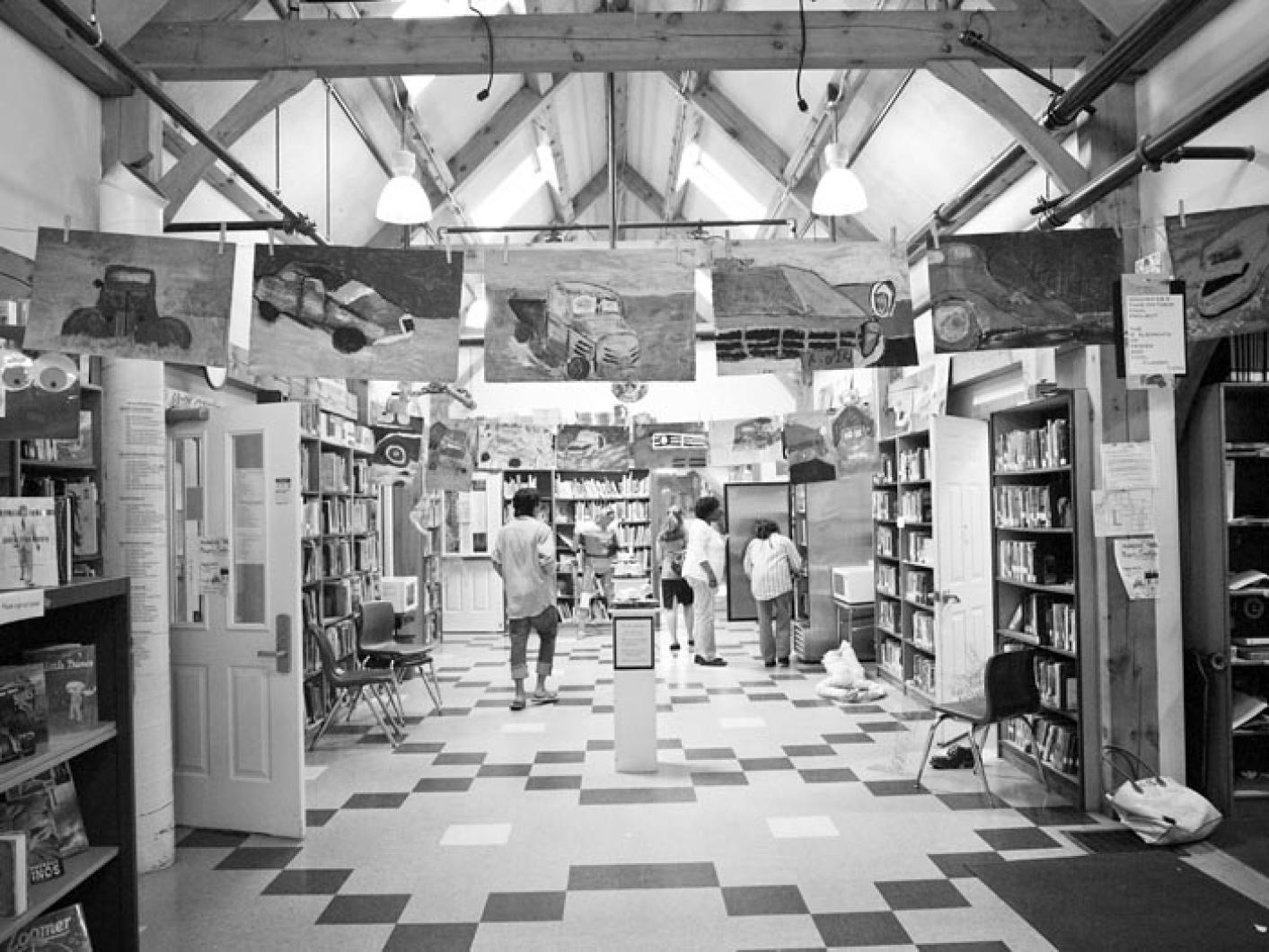This Sunday marks not just high school graduation for seven students, but the 10th commencement in the Martha’s Vineyard Public Charter School’s history and the end of the school’s 15th year. Even before its first day of school on Sept. 16, 1996, the charter school has been attracting attention and a legion of admirers.
Parents and students alike admire the school’s unique approach to learning. Tamara Weiss, whose son Noah attended for sixth and seventh grade and now studies at the regional high school, remains enamored with the charter school. “They give the student a lot of responsibility to educate themselves, which I particularly like and if you have a kid that’s self-motivated that’s pretty wonderful. They make learning fun. I think we’re very, very lucky on this Island to have an alternative school that’s not just the regular Martha’s Vineyard public school. There is an alternative there for kids who want it or need it.”
Self-directed learning is the central tenet of the educational philosophy at the public charter school. According to the school’s Web site: “At the core of MVPCS educational program is the belief that self-directed learning is the deepest learning.” At the start of each school year, students create a personal education plan with input from their parents and teachers that includes proposed areas of study and short and long-term goals. The charter school aims to instill a love of learning in all of its students.
“Child-centered learning, child-centered education, is at the forefront of what we do here at the charter school,” said Robert Moore, the school’s director. “I think you’ve got to get students’ hands going. You’ve got to get them touching things and engaging in conversation.”
Students are encouraged to blossom and flourish on their own as individuals and to treat learning as a personal journey. With a student-teacher ratio of eight to one, they are guaranteed a lot of personal time with their instructors. “We’re really pleased with the quality of student that has developed in our school,” said Mr. Moore.
Parents are effusive in their praise of the school. Ona Ignacio, who has two children at the school, said: “Both of my kids are different from one another and have had some learning difficulties and the charter school has such undivided attention and it has helped them.”
The school also is known for fostering a sense of community. Angie Park-Sayles, a parent of two young students, remarked, “If people weren’t happy with that school, they have the choice to take their kid out.” Choice is an important concept at the charter school and came up again and again in conversations with students, parents and administrators.
“They could be somewhere else and they’ve chosen to come here,” said Claudia Ewing, the school’s assistant director.
And alongside choice sits collaboration. “I believe that the lesson learned through the age groups is powerful. I also believe the collaboration that happens between adults in a K-12 is also unique in its own nice way,” said Mr. Moore. When asked if all this collaboration could lead to chaos, Mr. Moore demurred. “In this type of organization I think it’s healthy to have a lot of cooks in the kitchen at some point in the decision-making process. I think when deep thought, reflection, and contribution are made into all, if not most, decisions they tend to have legs. There are some decisions that, after long thought and discussion somebody wants someone to make a decision.”
That someone making the decision is Mr. Moore, who inspires a good deal of praise from students and administrators alike.
The school must be recertified every five years and Paul Karasik, director of development, says this has been helpful for the school. “If every public school in the United States had to go through this type of recertification process it would be really healthy for public education. It’s been really healthy for us,” Mr. Karasik said.
Personal education plans, portfolios and recertification aside, the school ultimately is focused on the student. “Bob always brings the discussion back to the student,” Mr. Karasik said.
Mr. Moore had no disagreement. “It’s about the students,” he said.
As they celebrate this milestone, what’s the next step for the charter school? Said Mr. Moore: “I think all of us need to continue to be reflective of our work, to be self-critical of our work. And I hope that the energy and the diligence that have been put into the first 15 years, continue for the next 15 years, and if that’s the case I think we’ll be in a place we’re really proud of.”




Comments
Comment policy »